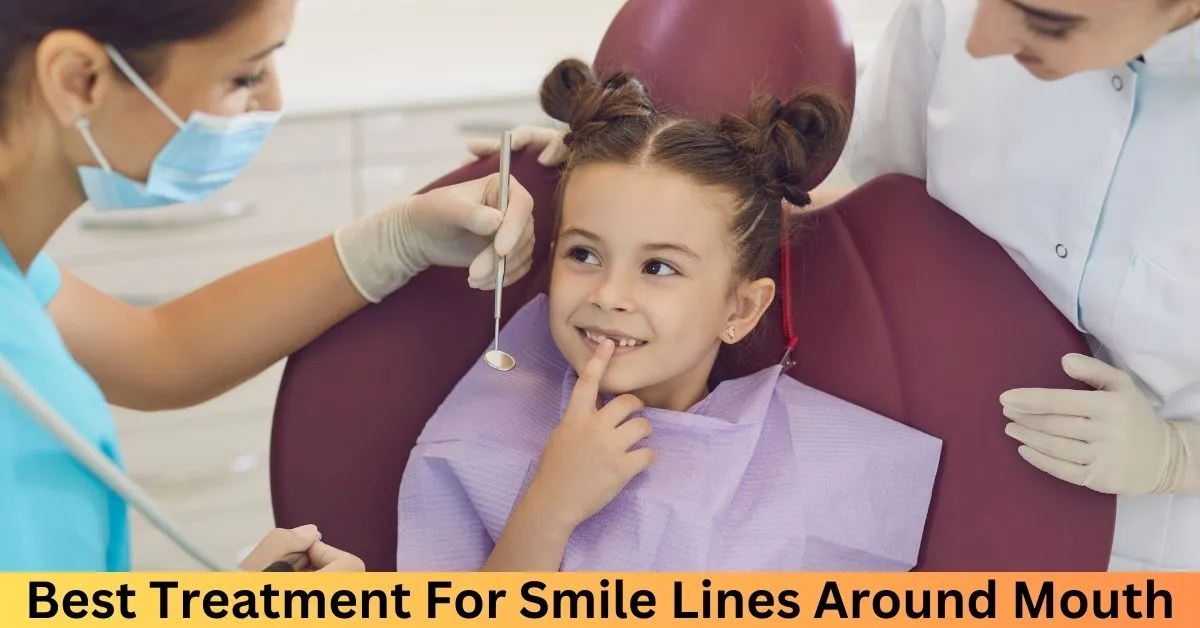The GO SMILE On The Go Teeth Whitening Pen is a portable teeth whitening pen that is designed to be convenient and easy to use. It is claimed to be effective at whitening teeth and removing stains, without causing sensitivity.
GO SMILE On The Go Teeth Whitening Pen
Here are some of the key features of the GO SMILE On The Go Teeth Whitening Pen:
- Portable and convenient: The pen is small and lightweight, making it easy to take with you on the go.
- Easy to use: Simply twist the dial at the bottom of the pen to release the whitening serum, brush a thin layer onto your teeth, and let it dissolve.
- No rinsing required: The serum dissolves cleanly away, leaving a refreshing mint aftertaste.
- Safe for sensitive teeth: The GO SMILE On The Go Teeth Whitening Pen is formulated to be gentle on teeth and gums.
- Clinically proven to whiten: The pen is said to whiten teeth up to 5 shades in just 7 days.
It is important to note that there is limited independent research available to confirm the effectiveness of the GO SMILE On The Go Teeth Whitening Pen. Additionally, the American Dental Association (ADA) recommends that patients consult with a dentist before using any at-home whitening products.
Here are some additional things to consider before using the GO SMILE On The Go Teeth Whitening Pen:
- The pen contains hydrogen peroxide, which is a bleaching agent that can irritate some people’s gums.
- The pen may not be as effective as professional teeth whitening treatments.
- It is important to follow the directions on the packaging carefully to avoid any potential side effects.
If you are considering using the GO SMILE On The Go Teeth Whitening Pen, it is important to weigh the potential benefits and risks and to talk to your dentist first.
Contents
Does a smile-whitening pen work?
Smile whitening pens can work to some extent, but they may not be as effective as other whitening options and have limitations. Here’s a breakdown:
Effectiveness:
- They can remove surface stains: Whitening pens contain bleaching agents (usually hydrogen peroxide or carbamide peroxide) that can break down and remove surface stains from coffee, tea, cigarettes, etc.
- Limited whitening: They generally have a lower concentration of bleaching agents compared to professional treatments or stronger at-home options like strips or trays. This means they may only provide a subtle difference in shade or may take longer to see noticeable results.
- Individual variations: Individual factors like the severity of stains, tooth sensitivity, and oral health can also affect how well a pen works for you.
Limitations:
- Not suitable for all stains: They are primarily effective on surface stains and may not work as well on deeper, intrinsic stains (e.g., from medications or genetics).
- Uneven application: Applying a pen evenly across all teeth can be challenging, potentially leading to uneven whitening results.
- Potential for sensitivity: Some people may experience tooth sensitivity using whitening products, including pens.
Before using any whitening product, it’s crucial to consult your dentist. They can assess your teeth and advise you on the best course of action for achieving your desired results, considering your specific needs and potential concerns.
Here are some alternative whitening options:
- Professional whitening: This is the most effective method but comes at a higher cost.
- Over-the-counter whitening strips/trays: These are more affordable than professional treatments and can offer noticeable results, but they may take longer and require more consistency.
- Whitening toothpaste: These can help maintain whiteness but provide minimal whitening alone.
Remember, maintaining good oral hygiene through regular brushing and flossing is crucial for overall oral health and a bright smile.
Is Go Smile teeth whitening safe?
The safety of GO SMILE teeth whitening pens depends on several factors:
General Safety:
- Formulated for most people: The GO SMILE website states their products are safe for most people, but recommend against use for:
- Pregnant or nursing women
- Children under 12
- No harsh chemicals: They claim their products are free of propylene glycol and gentle on gums.
- Clinically tested: They cite clinical studies showing no significant increase in tooth sensitivity and whitening results.
However, it’s important to consider:
- Individual sensitivity: Even “gentle” products can irritate some individuals.
- Limited independent research: The clinically tested claims are from the manufacturer, and independent research might be limited.
- American Dental Association (ADA) recommendation: The ADA advises consulting a dentist before using any at-home whitening products, including GO SMILE pens.
Therefore, while GO SMILE pens claim to be safe and gentle, it’s crucial to consider your health and consult your dentist before using them.
Here’s what your dentist can help with:
- Assessing your situation: They can check for underlying dental issues that might be affected by whitening.
- Recommending the most suitable option: Based on your needs, they can recommend the safest and most effective whitening method for you.
- Monitoring progress: They can monitor your progress and address any potential concerns during the whitening process.
The decision to use GO SMILE pens or any other at-home whitening product is yours. However, seeking professional guidance from your dentist before proceeding is strongly recommended.
Are whitening pens safe for teeth?
Whitening pens can generally be safe for teeth when used as directed, but there are some important things to consider:
Safety:
- Mostly safe for most: When used correctly, whitening pens are generally considered safe for most individuals. However, it’s important to consult your dentist first if you have any pre-existing oral health concerns, are pregnant or breastfeeding, or have sensitive teeth.
- Potential for sensitivity: Some people may experience temporary tooth sensitivity while using whitening pens, especially those with sensitive teeth or exposed tooth roots. This is usually mild and should subside after discontinuing use.
- Gum irritation: Improper application or overuse can cause gum irritation, so it’s crucial to apply the gel only to teeth and avoid contact with gums.
Effectiveness:
- Lower concentration: Compared to professional whitening treatments or stronger at-home options, whitening pens typically contain a lower concentration of bleaching agents (like hydrogen peroxide or carbamide peroxide). This means they may:
- Offer milder whitening results.
- Take longer to see noticeable results.
- Be less effective on deeper stains.
Additional factors:
- Uneven application: Applying a pen evenly across all teeth can be challenging, potentially leading to uneven whitening results.
- Regulation: Whitening pens are not regulated by the FDA as strictly as some other dental products.
Overall, whitening pens can be a safe option for some individuals, but it’s crucial to use them with caution:
- Always follow the manufacturer’s instructions.
- Consult your dentist before use, especially if you have any concerns.
- Be mindful of potential side effects like sensitivity and stop use if you experience discomfort.
- Consider alternative whitening options based on your desired results and your dentist’s recommendation.
Remember, maintaining good oral hygiene through regular brushing and flossing is the foundation for a healthy, bright smile.
How long does a smile whitening pen last?
The number of applications you’ll get from a smile whitening pen can vary depending on several factors:
- Size of the pen: Larger pens hold more gel and will last longer than smaller ones.
- Amount of gel used per application: Different brands and even different pens within the same brand may recommend using varying amounts of gel peruse.
- Frequency of use: The more frequently you use the pen, the faster it will run out.
However, as a general guideline:
- Most whitening pens are designed to last for anywhere from 10 to 20 applications.
- Some brands, like iSmile, claim their pen can last up to 22 treatments.
- The instructions on the specific pen you purchase will provide the most accurate estimate of its lifespan.
Here are some additional points to keep in mind:
- Expiry date: Like other products, whitening pens also have an expiry date. Using an expired pen can be ineffective and potentially harmful. Always check the expiry date before using.
- Storage: Storing the pen according to the manufacturer’s instructions will help maintain its effectiveness and lifespan.
- Results: Even after using all the gel in the pen, you may not achieve your desired level of whitening. It’s important to be realistic about your expectations and consult your dentist if you’re looking for significant whitening results.
A smile whitening pen can be a convenient and affordable way to slightly whiten your teeth, but it’s important to use it properly and understand its limitations.
Can I use a whitening pen every day?
Whether you can use a whitening pen every day depends on the specific product and your situation. Here’s a breakdown:
General guidelines:
- Most whitening pens are not recommended for daily use. This is because:
- They often contain lower concentrations of bleaching agents compared to professional treatments or stronger at-home options. Daily use may not be necessary for results.
- Overuse can increase the risk of tooth sensitivity and gum irritation.
- Many manufacturers recommend using their pens every other day or for a specific limited period (e.g., one week).
Individual factors:
- Sensitivity: If you experience tooth sensitivity while using a pen, stop using it immediately and consult your dentist. Daily use might exacerbate sensitivity in such cases.
- Desired results: If you’re aiming for subtle whitening, using the pen every other day might be sufficient. However, for more noticeable results, the instructions might suggest using it more frequently within a specific timeframe.
Therefore, it’s crucial to:
- Read the instructions on your specific whitening pen carefully. They will provide the recommended frequency of use.
- Consult your dentist before using any whitening product, especially if you have sensitive teeth, pre-existing oral conditions, or any concerns. They can guide you on the safest and most effective approach for your individual needs.
Alternative options like professional teeth whitening or at-home whitening strips/trays might be used daily for a set period under your dentist’s supervision and might be more effective for significant whitening.
Remember, maintaining good oral hygiene through regular brushing and flossing is crucial for a healthy, bright smile.
Are whitening pens healthy?
Whitening pens can be considered generally safe for most healthy individuals when used correctly and according to the instructions. However, it’s important to understand their limitations and potential side effects:
Safety:
- Generally safe: When used properly, they are not inherently harmful to healthy teeth and gums.
- Potential side effects:
- Temporary tooth sensitivity: This is the most common side effect, especially for those with sensitive teeth or exposed tooth roots. It should subside after discontinuing use.
- Gum irritation: Improper application or overuse can irritate. Apply gel only to teeth and avoid contact with gums.
- Uneven whitening: Applying the pen evenly can be challenging, potentially leading to uneven results.
Limitations:
- Lower concentration: They contain a lower concentration of bleaching agents than professional treatments or stronger at-home options. This means:
- Milder whitening results: Don’t expect drastic whitening.
- Longer time for noticeable results: May take longer to see any whitening.
- Less effective on deep stains: Less effective for deep stains caused by medication or genetics.
Therefore, whitening pens may not be considered “healthy” in the sense that they provide significant health benefits beyond aesthetic enhancement through mild whitening. However, they can be a relatively safe option for some individuals when used responsibly and with an understanding of their limitations.
Here are some recommendations for safe use:
- Consult your dentist before use, especially if you have any concerns or pre-existing oral conditions.
- Follow the manufacturer’s instructions carefully.
- Discontinue use if you experience any discomfort or irritation.
- Consider alternative options like professional whitening or dentist-recommended products for significant whitening. Remember, maintaining good oral hygiene through regular brushing and flossing is crucial for a healthy smile.
How long does a smile last?
A smile itself is not a physical object and doesn’t have a duration in the same way as physical things. However, we can consider several aspects of how long a smile “lasts” depending on the context:
Physical duration:
- Facial expression: The physical act of holding a smile can last anywhere from a fraction of a second to several seconds depending on the intensity and intention behind the smile.
- Muscle memory: If you “hold” a smile for a longer period, your facial muscles might start to fatigue, making it difficult to sustain.
Emotional impact:
- Fleeting emotion: A smile often conveys a positive emotion like happiness, amusement, or friendliness. These emotions can be fleeting and may last for a moment, a few minutes, or even longer depending on the situation and context.
- Lingering effects: Even if the smile itself is not sustained, the positive emotions associated with it can have a lasting impact on the person smiling and those around them. Studies suggest smiles can elevate mood, reduce stress, and create a sense of connection.
Symbolic representation:
- Enduring symbol: In many cultures, a smile is a universal symbol of happiness, warmth, and positivity. It transcends language and can be used to convey these positive messages even if the smile itself doesn’t last long.
- Cultural variations: The meaning and interpretation of a smile can vary across cultures. What might be considered a friendly smile in one culture might be perceived differently in another.
Therefore, the answer to how long a smile lasts depends on how you interpret the question. It can be a fleeting physical expression, a temporary emotion, or a lasting symbol, depending on the context.







